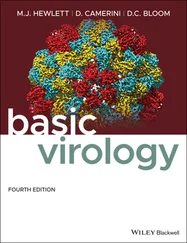Jane Flint - Principles of Virology
Здесь есть возможность читать онлайн «Jane Flint - Principles of Virology» — ознакомительный отрывок электронной книги совершенно бесплатно, а после прочтения отрывка купить полную версию. В некоторых случаях можно слушать аудио, скачать через торрент в формате fb2 и присутствует краткое содержание. Жанр: unrecognised, на английском языке. Описание произведения, (предисловие) а так же отзывы посетителей доступны на портале библиотеки ЛибКат.
- Название:Principles of Virology
- Автор:
- Жанр:
- Год:неизвестен
- ISBN:нет данных
- Рейтинг книги:3 / 5. Голосов: 1
-
Избранное:Добавить в избранное
- Отзывы:
-
Ваша оценка:
- 60
- 1
- 2
- 3
- 4
- 5
Principles of Virology: краткое содержание, описание и аннотация
Предлагаем к чтению аннотацию, описание, краткое содержание или предисловие (зависит от того, что написал сам автор книги «Principles of Virology»). Если вы не нашли необходимую информацию о книге — напишите в комментариях, мы постараемся отыскать её.
Volume I: Molecular Biology
Volume II: Pathogenesis and Control
Principles of Virology, Fifth Edition
Principles of Virology — читать онлайн ознакомительный отрывок
Ниже представлен текст книги, разбитый по страницам. Система сохранения места последней прочитанной страницы, позволяет с удобством читать онлайн бесплатно книгу «Principles of Virology», без необходимости каждый раз заново искать на чём Вы остановились. Поставьте закладку, и сможете в любой момент перейти на страницу, на которой закончили чтение.
Интервал:
Закладка:
Thus, we cannot reject the assumption that the effect of the filtered lymph is not due to toxicity, but rather to the ability of the agent to replicate.
F. LOEFFLER, 1898
Luria’s Credo
“There is an intrinsic simplicity of nature and the ultimate contribution of science resides in the discovery of unifying and simplifying generalizations, rather than in the description of isolated situations—in the visualization of simple, overall patterns rather than in the analysis of patchworks.” More than half a century has passed since Salvador Luria wrote this credo in the introduction to the classic textbook General Virology .
Despite an explosion of information in biology since Luria wrote these words, his vision of unity in diversity is as relevant now as it was then. That such unifying principles exist may not be obvious considering the bewildering array of viruses, genes, and proteins recognized in modern virology. Indeed, new viruses are being described regularly, and viral diseases such as acquired immunodeficiency syndrome (AIDS), hepatitis, and influenza continue to challenge our efforts to control them. Yet Luria’s credo still stands: even as our knowledge of viruses continues to increase, it is clear that their reproduction and survival depend on similar pathways. This insight has been hard-won over many years of observation, research, and debate; the history of virology is rich and instructive.
Viruses Defined
Viruses are microscopic infectious agents that can reproduce only inside a cell that they infect: they are obligate parasitesof their host cells. Viruses spread from cell to cell via infectious particles called virions, which contain genomes comprising RNA or DNA surrounded by a protective protein coat. Upon particle entry and disassociation in a host cell, the viral genome directs synthesis of viral components by cellular systems. Progeny virus particles are formed in the infected cell by de novo self-assembly from the newly synthesized components.
As will be discussed in the following chapters, advances in knowledge of the structure of virus particles and the mechanisms by which they are produced in their host cells have been accompanied by increasingly accurate definitions of these unique agents. The earliest pathogenic viruses, distinguished by their small size and dependence on a host organism for reproduction, emphasized the importance of viruses as agents of disease. But there are many other important reasons to study viruses.
Why We Study Viruses
Viruses Are Everywhere
Viruses are all around us, comprising an enormous proportion of our environment, in both number and total mass ( Box 1.1). All living things encounter billions of virus particles every day. For example, they enter our lungs in the 6 liters of air each of us inhales every minute; they enter our digestive systems with the food we eat; and they are transferred to our eyes, mouths, and other points of entry from the surfaces we touch and the people with whom we interact. Viral nucleic acids (the virome) can be found in the respiratory, gastrointestinal, and urogenital tracts even of normal, healthy individuals ( Fig. 1.1). Our bloodstreams harbor up to 100,000 virus particles per milliliter. In addition to viruses that can infect us, our intestinal tracts are loaded with myriad plant and insect viruses, as well as many hundreds of bacterial species that harbor their own constellations of viruses.
PRINCIPLES Foundations
Viruses are obligate intracellular parasites and depend on their host cell for all aspects of their reproduction.
The field of virology encompasses viral discovery; the study of virus structure and reproduction; and the importance of viruses in biology, ecology, and disease.
This text focuses primarily on viruses that infect vertebrates, especially humans, but it is important to keep in mind that viruses infect all living things including insects, plants, and bacteria.
Viruses are not solely pathogenic nuisances; they can be beneficial. Viruses contribute to ecological homeostasis, keep our immune responses activated and alert, and can be used as molecular flashlights to illuminate cellular processes.
Viruses have been part of all of human history: they were present long before Homo sapiens evolved, and the majority of human infections were likely acquired from other animals (zoonoses).
While Koch’s postulates were essential for defining many agents of disease, not all pathogenic viruses can be shown to fulfill these criteria.
Viruses can be described based on their appearance, the hosts they infect, or the nature of their nucleic acid genome.
All viruses must produce mRNA that can be translated by cellular ribosomes. The Baltimore classification allows relationships among viruses with RNA or DNA genomes to be determined based on the pathway required for mRNA production.
A common program underlies the propagation of all viruses. This textbook describes that strategy and the similarities and differences in the manner in which different viruses are reproduced, spread, and cause disease.
Viruses Infect All Living Things
While most of this textbook focuses on viral infections of humans, it is important to bear in mind that viruses also infect pets, domestic and wild animals, plants, and insects throughout the world. They infect microbes such as algae, fungi, and bacteria, and some even interfere with the reproduction of other viruses. Viral infection of agricultural plants and animals can have enormous economic and societal impact. Outbreaks of infection by foot-and-mouth disease and avian influenza viruses have led to the destruction ( culling) of millions of cattle, sheep, and poultry, including healthy animals, to prevent further spread. Losses in the United Kingdom during the 2001 outbreak of foot-and-mouth disease ran into billions of dollars, and caused havoc for both farmers and the government ( Box 1.2). More recent outbreaks of the avian influenza virus H5N1 and other strains in Asia have resulted in similar disruption and economic loss. Viruses that infect crops such as potatoes and fruit trees are common, and can lead to serious food shortages as well as financial devastation.
BOX 1.1
BACKGROUND
Some astounding numbers
Viruses are the most abundant entities in the biosphere. The biomass on our planet of bacterial viruses alone exceeds that of all of Earth’s elephants by more than 1,000-fold. There are more than 1030 particles of bacterial viruses in the world’s oceans, enough to extend out into space for 200 million light-years if arranged head to tail ( http://www.virology.ws/2009/03/20/the-abundant-and-diverse-viruses-of-the-seas/; http://www.phagehunter.org/2008/09/how-far-do-those-phages-stretch.html).
Whales are commonly infected with a member of the virus family Caliciviridae that causes rashes, blisters, intestinal problems, and diarrhea, and that can also infect humans. Infected whales excrete more than 1013 calicivirus particles daily.
The average human body contains approximately 1013 cells, but almost an equal number of bacteria, and as many as 100-fold more virus particles.
With about 1016 human immunodeficiency virus type 1 (HIV-1) genomes on the planet today, it is highly probable that somewhere there exist HIV-1 genomes that are resistant to every one of the antiviral drugs that we have now or are likely to have in the future.

Viruses reside in Earth’s vast oceans and everywhere else on our planet.Courtesy of NASA’s Earth Observatory, Suomi NPP satellite image courtesy of NASA/GSFC.
Читать дальшеИнтервал:
Закладка:
Похожие книги на «Principles of Virology»
Представляем Вашему вниманию похожие книги на «Principles of Virology» списком для выбора. Мы отобрали схожую по названию и смыслу литературу в надежде предоставить читателям больше вариантов отыскать новые, интересные, ещё непрочитанные произведения.
Обсуждение, отзывы о книге «Principles of Virology» и просто собственные мнения читателей. Оставьте ваши комментарии, напишите, что Вы думаете о произведении, его смысле или главных героях. Укажите что конкретно понравилось, а что нет, и почему Вы так считаете.











